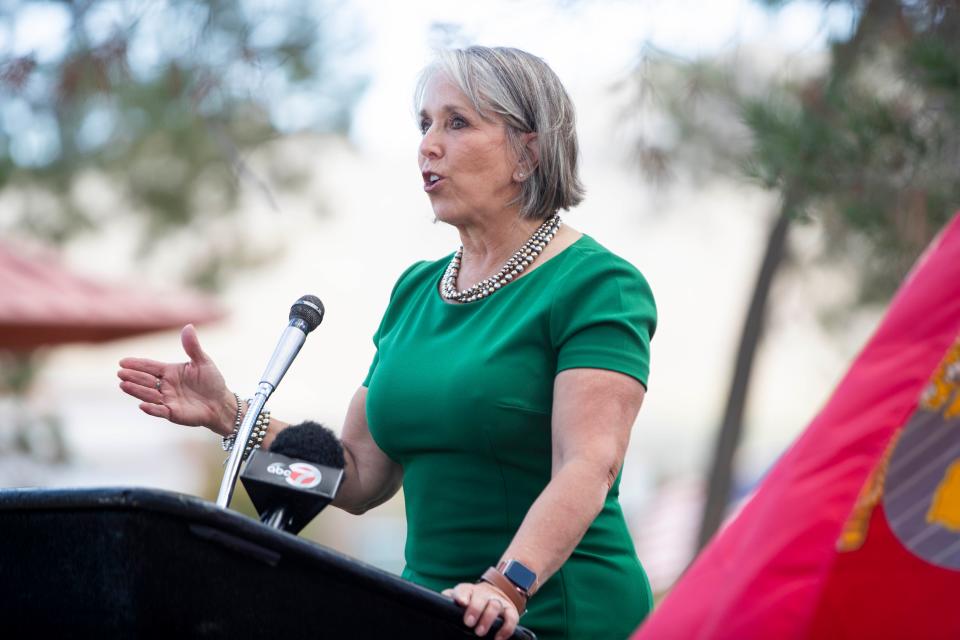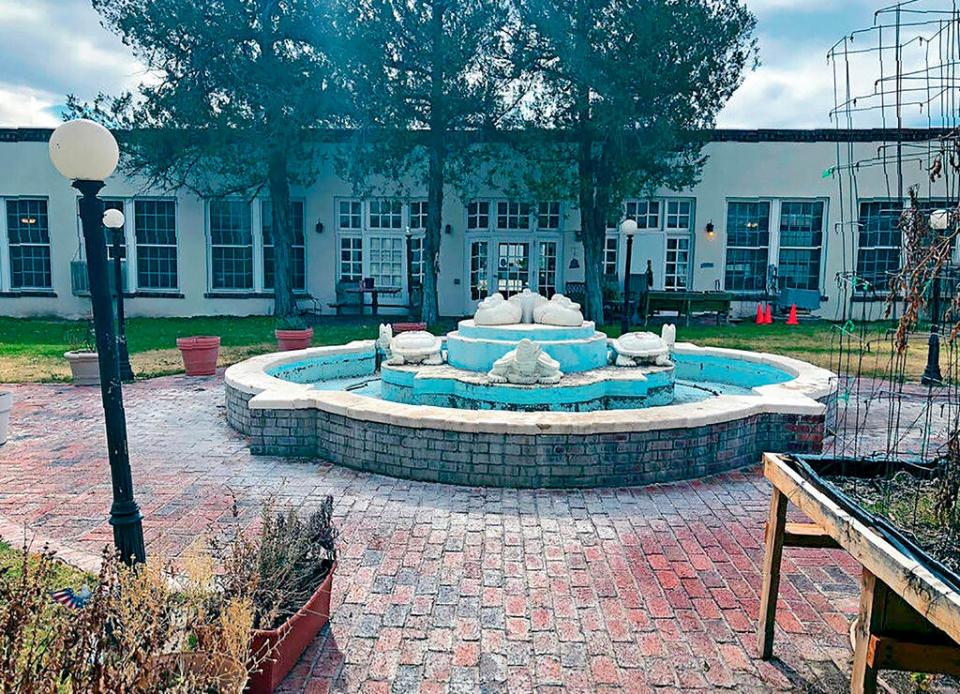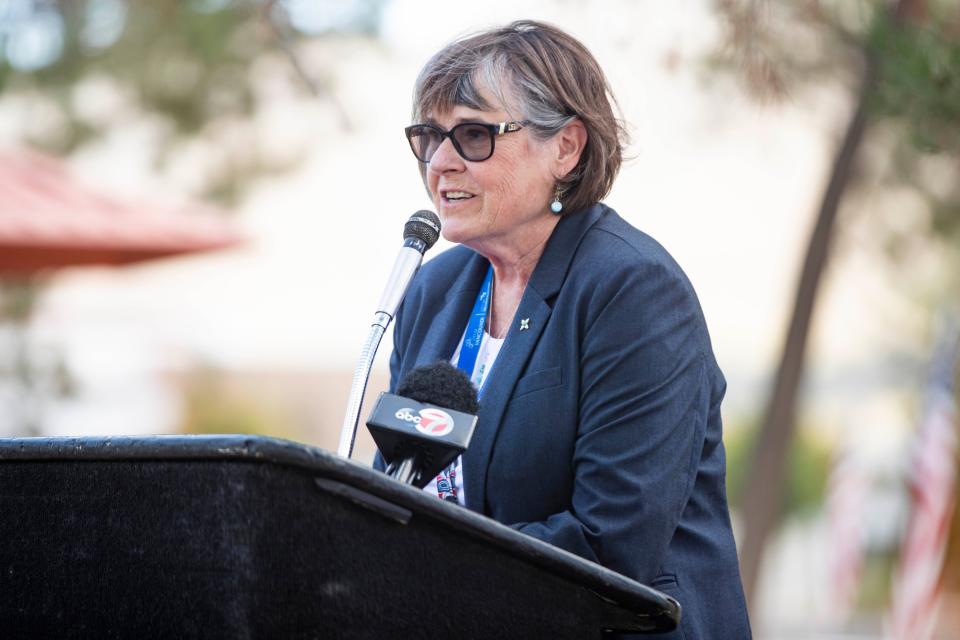Plans for old Tingley Hospital in T or C unclear as new veterans' housing is built
- Oops!Something went wrong.Please try again later.
- Oops!Something went wrong.Please try again later.
The Depression-era hospital building that houses the New Mexico State Veterans' Home may continue to serve the public after new dormitories are built, but firm plans for the historic site have yet to develop, the governor's office said Friday.
Earlier this week, construction began on new housing for the approximately 70 military veterans in residence at the veterans' home in Truth or Consequences. They are currently housed in shared living quarters, with as many as four to a room, mainly within a hospital built from 1936 to 1937 originally known as the Carrie Tingley Hospital for Crippled Children.
The home was the site of a lethal COVID-19 outbreak early in the pandemic, attributed in part to the shared rooms and inadequate air circulation. Residents and visiting lawmakers have also reported issues with plumbing, deterioration of the structure and other problems with the facilities.
“These old buildings do not serve the men and women who served us and stood up for their countries very effectively,” Gov. Michelle Lujan Grisham said during a groundbreaking ceremony Tuesday.

The $60 million project is set to build six residences with 72 private living spaces and ADA-accessible bathrooms in modern structures designed to match existing buildings at the veterans' home on South Broadway Street.
Tingley Hospital, which treated polio and other afflictions in children, relocated to Albuquerque in 1981. The facilities left behind were added to the National Register of Historic Places as the Carrie Tingley Hospital Historic District in 2005.
The six original buildings were constructed through the Works Progress Administration, a federal program that employed millions of artists, artisans and construction workers during the presidency of Franklin Delano Roosevelt on a mesa overlooking the town then named Hot Springs. (It was renamed Truth or Consequences, after a radio quiz show, in 1950.)
Per the application for its historical designation, the site's architectural significance was in the design and construction of the 100,000 square-foot main hospital, embodying the Territorial Revival style of architecture with its adobe surfaces and Greek-style trimmings ― features echoed in the design of the new housing. The original water tower and the site's landscaping were also listed among its historical features.
The hospital itself, named for the wife of Gov. Clyde Tingley, was known nationwide for its polio treatment, drawing on the area hot springs and sunshine, which were used in therapies prior to the development of a polio vaccine. It was also an important teaching hospital.

Carrie Tingley herself, a tuberculosis survivor, advocated for federal funds to build the hospital and was a champion for children's healthcare. She died in Albuquerque in 1961.
What will eventually become of the old hospital is unclear, according to Kathy Kunkel, the former state health secretary who is now the special projects director for the governor's office.
"All state efforts have been devoted to the design and construction of the new small homes that will replace the Old Main," Kunkel wrote in an email, including efforts to secure more funding through the federal Veterans Administration.
Kunkel said the state had had talks with the National New Deal Preservation Association, a nonprofit headquartered in Santa Fe, about the preservation of the courtyard's "Turtle Fountain," a water feature designed and built by artist Eugenie Shonnard through the WPA, which has deteriorated in recent years.

Kunkel also said the state Department of Health, which oversees the veterans' home, has expressed interest in offering unspecified programming for residents and other veterans at the facility.
"I am just beginning to develop data points such as costs to renovate and funding options to present to the Governor and legislature," Kunkel wrote.
For now, the hospital appears to be poised to remain indefinitely not only as a historical site but a working facility.
Algernon D'Ammassa can be reached at 575-541-5451, adammassa@lcsun-news.com or @AlgernonWrites on Twitter.
This article originally appeared on Las Cruces Sun-News: Plans for old Tingley Hospital unclear as new veterans' housing is built

